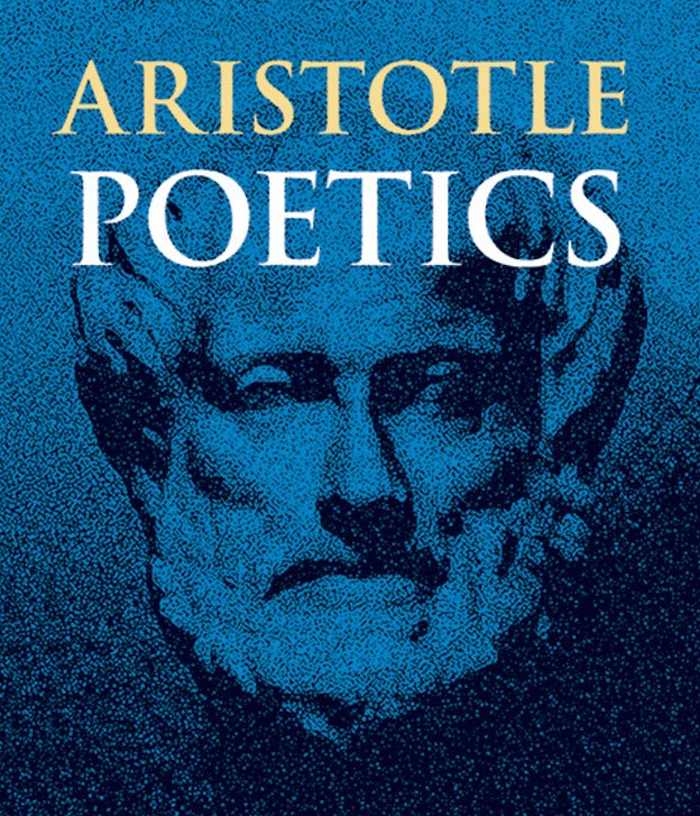Studying Aristotle’s “Poetics” — Part 3: Medium, Objects, Manner
As I’ve been interviewing screenwriters, I typically ask what some of their influences are. One book title comes up over and over again: Aristotle’s “Poetics.” I confess I’ve never read the entire thing, only bits and pieces. So I thought, why not do a daily series to provide a structure to compel me to go through it. That way we’d all benefit from the process.

For background on Aristotle, you can go here to see an article on him in the Stanford Encyclopedia of Philosophy.
To download “Poetics,” you can go here.
Part 3: Medium, Objects, Manner
There is still a third difference- the manner in which each of these
objects may be imitated. For the medium being the same, and the objects
the same, the poet may imitate by narration- in which case he can
either take another personality as Homer does, or speak in his own
person, unchanged- or he may present all his characters as living
and moving before us.
These, then, as we said at the beginning, are the three differences
which distinguish artistic imitation- the medium, the objects, and
the manner. So that from one point of view, Sophocles is an imitator
of the same kind as Homer- for both imitate higher types of character;
from another point of view, of the same kind as Aristophanes- for
both imitate persons acting and doing. Hence, some say, the name of
‘drama’ is given to such poems, as representing action. For the same
reason the Dorians claim the invention both of Tragedy and Comedy.
The claim to Comedy is put forward by the Megarians- not only by those
of Greece proper, who allege that it originated under their democracy,
but also by the Megarians of Sicily, for the poet Epicharmus, who
is much earlier than Chionides and Magnes, belonged to that country.
Tragedy too is claimed by certain Dorians of the Peloponnese. In each
case they appeal to the evidence of language. The outlying villages,
they say, are by them called komai, by the Athenians demoi: and they
assume that comedians were so named not from komazein, ‘to revel,’
but because they wandered from village to village (kata komas), being
excluded contemptuously from the city. They add also that the Dorian
word for ‘doing’ is dran, and the Athenian, prattein.
This may suffice as to the number and nature of the various modes
of imitation.
These, then, as we said at the beginning, are the three differences which distinguish artistic imitation- the medium, the objects, and the manner.
Medium of imitation: Poetry through language or song through rhythm, language, melody, harmony.
Object of imitation: Men in action.
Manner of imitation: …the poet may imitate by narration- in which case he can either take another personality as Homer does, or speak in his own person, unchanged- or he may present all his characters as living and moving before us.
This last point raises the concept of Narrative Voice in relation to screenwriting. What is our point-of-view in relation to the subject matter as we ‘narrate’ events?
Genre + Style = Narrative Voice.
So as screenwriters, we not only have to be aware of our medium [screenplay] and our object [characters], we also have to be cognizant of our manner of imitation, the specific voice we use to narrate the story.
Do we use voice-over narration?
Do we tell the story through the perspective of one or more characters?
How do we use style to underscore the genre of our story?
All of this would seem to fall under the category of “manner of imitation.”
What do you see in this part of Aristotle’s “Poetics”? Please post your thoughts in comments.
See you here next time for another installment of this series.
For the entire series, go here.
Studying Aristotle’s “Poetics” — Part 3: Medium, Objects, Manner was originally published in Go Into The Story on Medium, where people are continuing the conversation by highlighting and responding to this story.
Go to Source
Author: Scott Myers